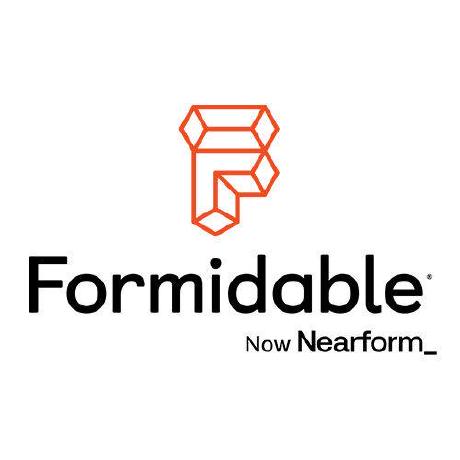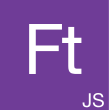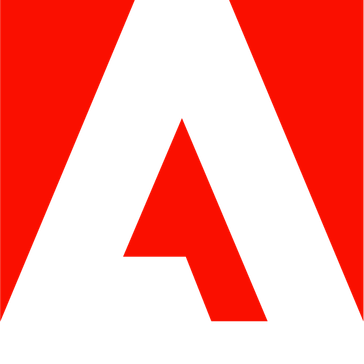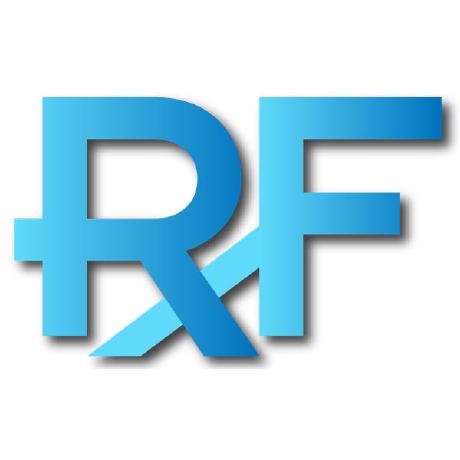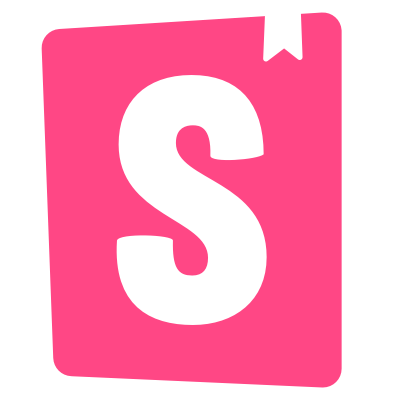@react-three/a11y brings accessibility to webGL with easy-to-use react-three-fiber components
An enterprise-class UI design language and React UI library.
Framework-agnostic CSS-in-JS with support for server-side rendering, browser prefixing, and minimum CSS generation.
A fully-featured caching GraphQL client with integrations for React that also has functionality for managing local state.
Astro is a fresh but familiar approach to building websites. Astro combines decades of proven performance best practices with the DX improvements of the component-oriented era. Use your favorite JavaScript framework and automatically ship the bare-minimum amount of JavaScript—by default.
Axios is a simple promise based HTTP client for the browser and node.js. Axios provides a simple to use library in a small package with a very extensible interface.
Blitz is a batteries-included framework that's inspired by Ruby on Rails, is built on Next.js, and features a "Zero-API" data layer abstraction that eliminates the need for REST/GraphQL.
Blueprint is a React-based UI toolkit for the web. It is optimized for building complex, data-dense web interfaces for desktop applications which run in modern browsers and IE11. This is not a mobile-first UI toolkit.
Build themeable React & React Native applications with your Bumbag
A library to add physics to react-three-fiber components. It provides a simple API to create and update physics bodies.
⚡️ Simple, Modular & Accessible UI Components for your React Applications
Create React apps with no build configuration. You don't need to learn and configure many build tools. Instant reloads help you focus on development. When it's time to deploy, your bundles are optimized automatically.
Allows the use of CSS Modules in projects built using Webpack. Also interprets @import and url() like import/require() and will resolve them.
Cypress IndexedDB helpers are a set of custom cypress commands that helps you handle indexedDB related operations in your Cypress tests.
Fast, easy and reliable testing for anything that runs in a browser.
A growing collection of useful helpers and abstractions for react-three-fiber
A simpler static site generator. An alternative to Jekyll. Written in JavaScript. Transforms a directory of templates (of varying types) into HTML. Works with HTML, Markdown, Liquid, Nunjucks, Handlebars, Mustache, EJS, Haml, Pug, and JavaScript Template Literals.
Emotion is a performant and flexible CSS-in-JS library. Building on many other CSS-in-JS libraries, it allows you to style apps quickly with string or object styles. It has predictable composition to avoid specificity issues with CSS. With source maps and labels, Emotion has a great developer experience and great performance with heavy caching in production.
Enzyme is a JavaScript Testing utility for React that makes it easier to test your React Components' output.
Fluent UI web represents a collection of utilities, React components, and web components for building web applications. It is the web version of Microsoft's cross-platform Fluent UI design framework.
Build forms in React, without the tears. Formik takes care of the repetitive and annoying stuff—keeping track of values/errors/visited fields, orchestrating validation, and handling submission�—so you don't have to. This means you spend less time wiring up state and change handlers and more time focusing on your business logic.
christianalfoni wrote an article on forms and validation with React, Nailing that validation with React JS, the result of that was this library. The main concept is that forms, inputs, and validation are done very differently across developers and projects. This React component aims to be that “sweet spot” between flexibility and reusability.
Motion is a production-ready motion library for React from Framer. It brings declarative animations, effortless layout transitions and gestures while maintaining HTML and SVG semantics.
Gatsby is a free and open source framework based on React that helps developers build blazing fast websites and apps. It combines the control and scalability of dynamically rendered sites with the speed of static-site generation, creating a whole new web of possibilities.
A set of HashiCorp branded react components currently maintained and used by the marketing dev team
A set of completely unstyled, fully accessible UI components, designed to integrate beautifully with Tailwind CSS.
Ignite UI for React includes a wide range of easy to use React UI components that have been designed and optimized for high-performance, high-volume data scenarios.
Jest is a delightful JavaScript Testing Framework with a focus on simplicity.
Primitive and flexible state management for React
KendoReact is a commercial UI library designed and built for developing business applications with React. Every UI component in the KendoReact suite has been built from the ground-up specifically for React. Please keep in mind that in order to use the npm packages you should either sign up for a 30-day free trial, or be a licensed developer, as KendoReact has a commercial license.
Ky is a tiny and elegant HTTP client based on the browser Fetch API. Ky targets modern browsers and Deno. It's just a tiny file with no dependencies.
A readable, automated, and optimized (5 kb) internationalization for JavaScript
A fully featured React components library.
A battle tested library that makes state management simple and scalable by transparently applying functional reactive programming. Uses observable data structures instead of actions and reducers.
MUI is a simple and customizable component library to build faster, beautiful, and more accessible React applications. Follow your own design system, or start with Material Design.
This library complements the internationalized routing capabilities of Next.js by managing translations and providing them to components.
Next.js gives you the best developer experience with all the features you need for production: hybrid static & server rendering, TypeScript support, smart bundling, route pre-fetching, and more. No config needed.
Advanced HTTP requests in node.js and browsers, using Servie, a set of standard, framework-agnostic HTTP interfaces for JavaScript servers and clients
PostCSS takes a CSS file and provides an API to analyze and modify its rules (by transforming them into an Abstract Syntax Tree). This API can then be used by plugins to do a lot of useful things, e.g., to find errors automatically, or to insert vendor prefixes.
Radium is a set of tools to manage inline styles on React elements. It gives you powerful styling capabilities without CSS.
Radix Primitives is a low-level UI component library with a focus on accessibility, customization and developer experience. You can use these components either as the base layer of your design system, or adopt them incrementally.
Reach Router is a small, simple router for React that borrows from React Router, Ember, and Preact Router. Reach Router has a small footprint, supports only simple route patterns by design, and has strong (but experimental) accessibility features.
The Accessible Foundation for React Apps and Design Systems
The most popular front-end framework rebuilt for React. Each component has been built from scratch as a true React component, without unneeded dependencies like jQuery.
Use hooks or FACC's (Function as Child Component) to fetch data in an easy way. No dependencies! Just React under the hood. Request and response interceptors allows you to easily customize connection with API (add authorization, refresh token, cache, etc). It uses Fetch API so it can be used in SSR apps (i.e. with isomorphic-fetch).
High performance, zero-dependency subscription-based form state management for React
Performant, flexible and extensible forms with easy-to-use validation. React Hook Form reduces the amount of code you need to write while removing unnecessary re-renders.
react-i18next is a powerful internationalization framework for React / React Native which is based on i18next. The module provides multiple components eg. to assert that needed translations get loaded or that your content gets rendered when the language changes.
FormatJS is a modular collection of JavaScript libraries for internationalization that are focused on formatting numbers, dates, and strings for displaying to people. It includes a set of core libraries that build on the JavaScript Intl built-ins and industry-wide i18n standards, plus a set of integrations for common template and component libraries.
For 95% of use-cases of animating components, we don't have to resort to using hard-coded easing curves and duration. Set up a stiffness and damping for your UI element, and let the magic of physics take care of the rest. This way, you don't have to worry about petty situations such as interrupted animation behavior. It also greatly simplifies the API.
react-postprocessing is a postprocessing wrapper for @react-three/fiber
Writing your data fetching logic by hand is over. Tell React Query where to get your data and how fresh you need it to be and the rest is automatic. React Query handles caching, background updates and stale data out of the box with zero-configuration.
React Router is a lightweight, fully-featured routing library for the React JavaScript library. React Router runs everywhere that React runs; on the web, on the server (using node.js), and on React Native.
A collection of libraries and tools that help you build adaptive, accessible, and robust user experiences.
react-spring is a spring-physics based animation library that should cover most of your UI related animation needs. It gives you tools flexible enough to confidently cast your ideas into moving interfaces.
🐐 Simple and complete React DOM testing utilities that encourage good testing practices.
A React library for Three.js to render 3D scenes in React.
A graphical user interface for changing variable states in React.
React-Toastify allows you to add notifications to your app with ease.
React components and hooks for creating VR/AR applications with react-three-fiber
Recoil lets you create a data-flow graph that flows from atoms (shared state) through selectors (pure functions) and down into your React components. Atoms are units of state that components can subscribe to. Selectors transform this state either synchronously or asynchronously.
Manage your form state in Redux. This library is largely deprecated in favor of React Final Form.
The official, opinionated, batteries-included toolset for efficient Redux development
A predictable, centralized, debuggable and flexible state container for JS apps inspired by the Flux and Elm architectures. Nowadays you should be using Redux Toolkit instead.
Redwood is an opinionated, full-stack, serverless-ready web application framework that will allow you to build and deploy with ease. Imagine a React frontend, statically delivered by CDN, that talks via GraphQL to your backend running on AWS Lambdas (or containers) around the world, all deployable with just a git push—that's Redwood.
Remix is a full stack web framework (from the creators of React Router) that lets you focus on the user interface and work back through web fundamentals to deliver a fast, slick, and resilient user experience.
A general purpose internationalization library in 298 bytes
A powerful data fetching and caching tool. It is designed to simplify common cases for loading data in a web application, eliminating the need to hand-write data fetching & caching logic yourself.
Sass is a very mature, stable, and powerful professional grade CSS extension language. It provides a superset of CSS with features like nesting, variables, imports and mixins.
Semantic UI React is the official React integration for Semantic UI, a popular UI development framework.
Generate a static set of custom utility classes and compose them either statically at build time, or dynamically at runtime, without the usual style generation overhead of CSS-in-JS. Basically, it’s like building your own zero-runtime, type-safe version of Tailwind, Styled System, etc.
Storybook is a development environment for UI components. It allows you to browse a component library, view the different states of each component, and interactively develop and test components.
This module is an implementation of Node's native http module for the browser. It tries to match Node's API and behavior as closely as possible, but some features aren't available, since browsers don't give nearly as much control over requests.
Utilising tagged template literals (a recent addition to JavaScript) and the power of CSS, styled-components allows you to write actual CSS code to style your components. It also removes the mapping between components and styles – using components as a low-level styling construct could not be easier!
Small progressive client-side HTTP request library, and Node.js module with the same API, supporting many high-level HTTP client features.
The name “SWR” is derived from stale-while-revalidate, a HTTP cache invalidation strategy popularized by HTTP RFC 5861. SWR is a strategy to first return the data from cache (stale), then send the fetch request (revalidate), and finally come with the up-to-date data.
A utility-first CSS framework packed with classes like flex, pt-4, text-center and rotate-90 that can be composed to build any design, directly in your markup.
A fully typesafe router with first-class search-param APIs and built-in caching, built for JS/TS
@use-gesture is a set of gestures that let you bind mouse and touch events to any node.
Lightweight Proxy-Based State Management for ReactJS and VanillaJS
Use TypeScript as your preprocessor. Write type‑safe, locally scoped classes, variables and themes, then generate static CSS files at build time.
A blazing fast unit test framework powered by Vite.
🧩 The component library for fast and accessible development of gorgeous interfaces.
JavaScript and TypeScript finite state machines and statecharts for the modern web.
A small, fast and scalable bearbones state-management solution using simplified flux principles.





































